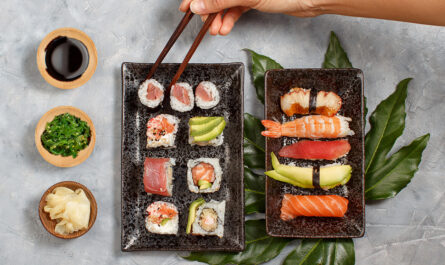The **Sasanishiki rice taste** is renowned among sushi connoisseurs for its delicate and subtle flavor profile. Originating from Japan, this variety of rice is celebrated for its perfect balance of sweetness and texture, making it a preferred choice for sushi preparation. In this article, we will delve into the unique characteristics of **Sasanishiki rice** and explore why it stands out in the culinary world.

What is Sasanishiki Rice?
Sasanishiki is a short-grain Japonica rice that is cultivated primarily in the Miyagi Prefecture of Japan. This rice variety has earned its reputation due to its ideal combination of stickiness and fluffiness, which contributes significantly to the **Sasanishiki rice taste** experienced in sushi dishes. For more on short-grain rice varieties, refer to short-grain rice.
The History Behind Sasanishiki Rice
Sasanishiki was developed in 1963 by crossing Hatsunishiki and Sasashigure rice varieties. The hybrid aimed to harness the best qualities of both parent strains, resulting in a rice variety that possesses exceptional taste and aroma qualities.
How Does Sasanishiki Rice Stand Out?
The standout feature of **Sasanishiki rice taste** lies in its soft, tender texture coupled with a slightly sweet flavor. Compared to other rice varieties, it maintains a distinct and clean taste that doesn’t overpower the primary ingredients in sushi, enhancing rather than masking the dish’s flavors.
Ideal Culinary Uses for Sasanishiki Rice
Primarily used in sushi, **Sasanishiki rice** is also suitable for other Japanese dishes like onigiri and donburi. Its flavor and texture allow for a versatile application in various culinary practices, complementing and elevating the accompanying ingredients.
Cooking Sasanishiki Rice to Perfection
Cooking **Sasanishiki rice** requires precision to maintain its distinct taste. Rinse the rice until the water runs clear, and let it soak for about 30 minutes before cooking. This process preserves the delicate aroma and enhances the taste. For expert tips, visit soaking rice tips.
Why Sasanishiki Rice is a Sushi Lover’s Favorite
Sushi enthusiasts appreciate the **Sasanishiki rice taste** for its subtle enhancement of sushi’s overall flavor profile. The rice’s harmony with vinegars and its chewy texture are perfect for sushi rolls and nigiri, resonating with those who seek quality sushi experiences.
Nutritional Benefits of Sasanishiki Rice
This rice variety is not just about taste; it also offers nutritional benefits. Sasanishiki rice is a source of carbohydrates, providing energy while also containing vital nutrients that contribute to a balanced diet.
Health Aspects
Like many Japanese rice varieties, Sasanishiki is low in fat and cholesterol, catering to those looking to maintain a healthy diet without sacrificing taste. It complements various ingredients, encouraging diverse and nutritious meal preparations.
Comparing Sasanishiki Rice with Other Rice Varieties
When comparing **Sasanishiki rice** with other popular rice varieties such as Koshihikari, the distinction lies in its milder flavor and more tender texture, appealing to those who prefer gentle flavors in their meals.
Conclusion
The **Sasanishiki rice taste** embodies a significant part of Japanese culinary tradition, beloved by sushi aficionados worldwide. Its balance of flavor and texture makes it a staple in creating delicious and authentic Japanese dishes. For more on rice varieties, explore this comprehensive guide.

FAQ Section
What makes Sasanishiki rice special?
Sasanishiki rice taste is unique due to its balance of sweetness and tenderness, ideal for sushi.
How do I cook Sasanishiki rice?
Rinse until the water is clear, soak for 30 minutes, and cook appropriately to retain its flavor.
Is Sasanishiki rice healthy?
Yes, it’s low in fat, provides energy, and is a nutritious part of a balanced diet.
This article contains affiliate links. We may earn a commission at no extra cost to you.


